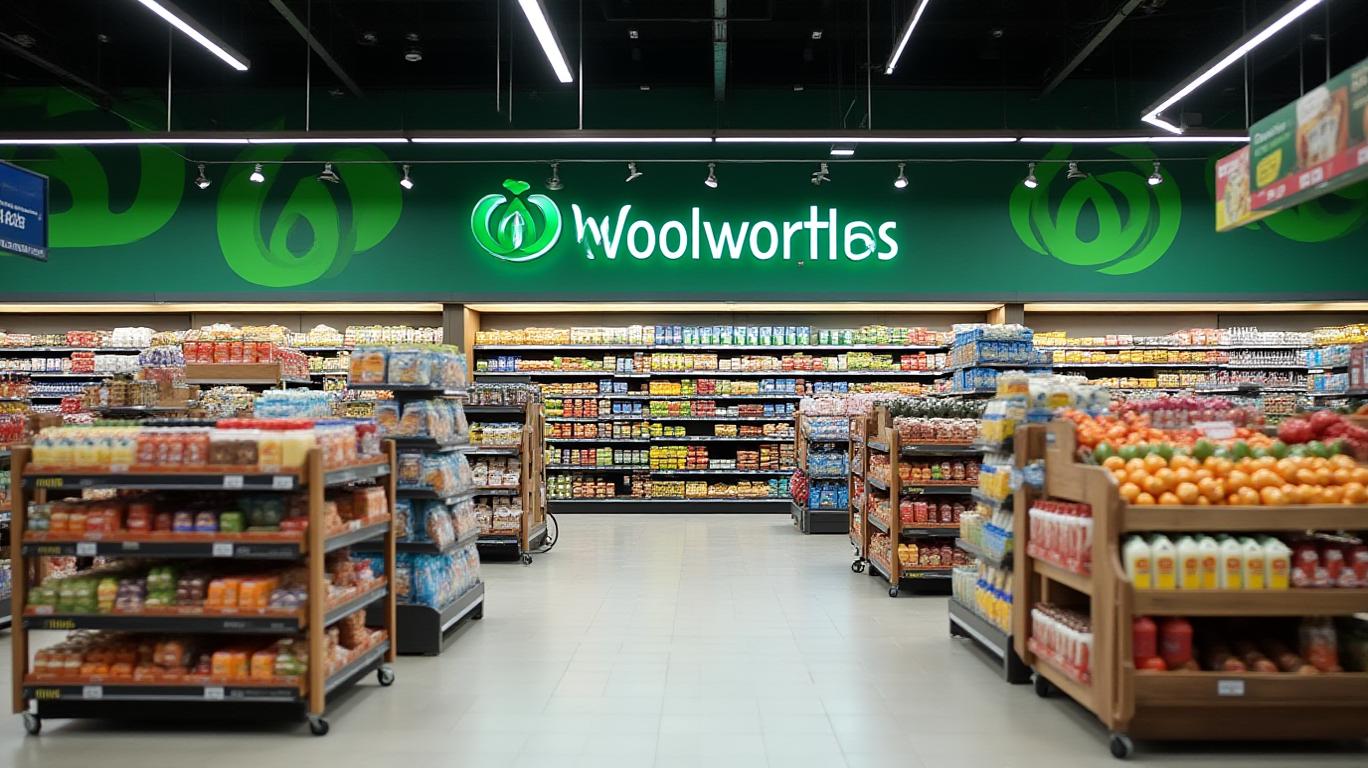Woolworths NZ: Navigating Regulatory Headwinds and Operational Challenges in 2025
Woolworths New Zealand (Woolworths NZ), a subsidiary of Australia’s Woolworths Group, faces mounting regulatory scrutiny and operational hurdles as it battles through 2025. The Commerce Commission’s criminal charges over alleged pricing inaccuracies and misleading promotions have underscored systemic issues in the supermarket sector, while deflationary pressures and supply chain disruptions test the company’s resilience. This article analyzes the implications of these challenges for investors, weighing strategic successes against looming risks.

The Regulatory Crosshairs: Charges and Compliance Costs
In December 2023, the Commerce Commission filed criminal charges against Woolworths NZ under the Fair Trading Act, alleging widespread inaccuracies in pricing labels and promotional “specials.” These charges, formally lodged in the Auckland District Court, reflect the regulator’s intensified focus on consumer protection in a sector where pricing errors have become endemic.
While Woolworths has cooperated with the investigation and emphasized its refund policy—allowing customers to keep overcharged items and receive a full refund—the financial and reputational stakes remain high. Similar cases, such as the $292,500 fine imposed on Walond Limited (Look Sharp) in February 2025 for FTA breaches, highlight the potential penalties. For Woolworths, fines could range up to NZD600,000 per violation, though the scale of the alleged offenses could amplify costs. Beyond direct fines, the company faces operational expenses to overhaul pricing systems, train staff, and implement audits to ensure compliance.
Woolworths Group’s shares rose 2% to $32.15 in early 2025 following Q3 results, but they remain below their 2021 peak, reflecting investor skepticism about the NZ division’s turnaround.
2025 Financial Performance: Growth Amid Headwinds
Woolworths NZ reported a 4.4% year-over-year sales increase in Q3 2025, driven by strategic initiatives:
- E-commerce surge: Online sales grew 24.3%, accounting for 14.8% of total revenue, with same-day delivery fulfilling 23% of orders within two hours.
- Collectibles campaigns: The Minecraft Kiwi collectible series boosted Cartology revenue by 29.1%, spurring foot traffic and adjacent category sales.
- Loyalty programs: The Everyday Rewards program expanded to 2.1 million active members in NZ—a 30% increase—locking in repeat customers.
However, these gains face significant headwinds:
- Deflationary pressures: Falling prices in long-life grocery categories forced Woolworths to maintain competitive pricing, squeezing margins. The parent company’s $400 million cost-reduction program aims to offset this, though it risks employee morale.
- Supply chain risks: Australian floods in early 2025 caused NZD20–25 million in supply chain costs, highlighting vulnerabilities in cross-border logistics.
- Discretionary division struggles: The BIG W division, part of the Woolworths Group, reported a 1.5% sales decline due to inventory missteps and faces a projected NZD70 million loss in H2 2025, further straining resources.
Operational Restructuring and Market Competition
Woolworths NZ’s operational shifts include:
- Store rebranding: Over 60% of New World stores have been rebranded as Woolworths, aiming to unify the brand and improve customer recognition.
- Labor cost cuts: Over 55 employees at the closed Te Atatū store were relocated or retrained, with potential pay reductions to reduce overhead.
Yet, these moves risk customer dissatisfaction and market share erosion. Rivals like Foodstuffs (owner of Pak’nSave and New World) and Countdown continue to capitalize on Woolworths’ missteps, particularly in Auckland, where Foodstuffs’ aggressive expansion post-Te Atatū sale signals intensified competition.
Regulatory and Reputational Risks Ahead
The Grocery Industry Competition Act’s new mandatory disclosure rules, requiring supermarkets to report customer complaints, could further expose Woolworths NZ’s pricing issues. Combined with ongoing ACCC investigations in Australia over similar practices, the company faces a multi-jurisdictional compliance burden.
Conclusion: A Fragile Turnaround?
Woolworths NZ’s Q3 2025 performance offers cautious optimism, with e-commerce and collectibles driving growth. However, the path to sustained profitability remains fraught. Deflationary pressures, supply chain fragility, and regulatory fines could offset gains, while the BIG W division’s losses threaten group-wide stability.
Key data points underscore the tightrope:
- Sales growth: 4.4% in Q3 2025 vs. a 57% earnings drop in FY2024 to NZD108 million.
- Cost pressures: NZD400 million cost cuts vs. NZD20–25 million in flood-related supply chain costs.
- Market share: Foodstuffs’ aggressive expansion in Auckland highlights competitive threats.
Investors should scrutinize the August 2025 full-year results to assess whether Woolworths NZ’s initiatives—e-commerce dominance, collectibles, and store rebranding—can outweigh its structural challenges. While the stock’s 2% rebound in early 2025 signals investor hope, the road to recovery remains lined with regulatory pitfalls and operational uncertainties. For now, Woolworths NZ’s future hinges on balancing innovation, cost discipline, and compliance—a delicate act in a highly competitive market.

Comments
No comments yet